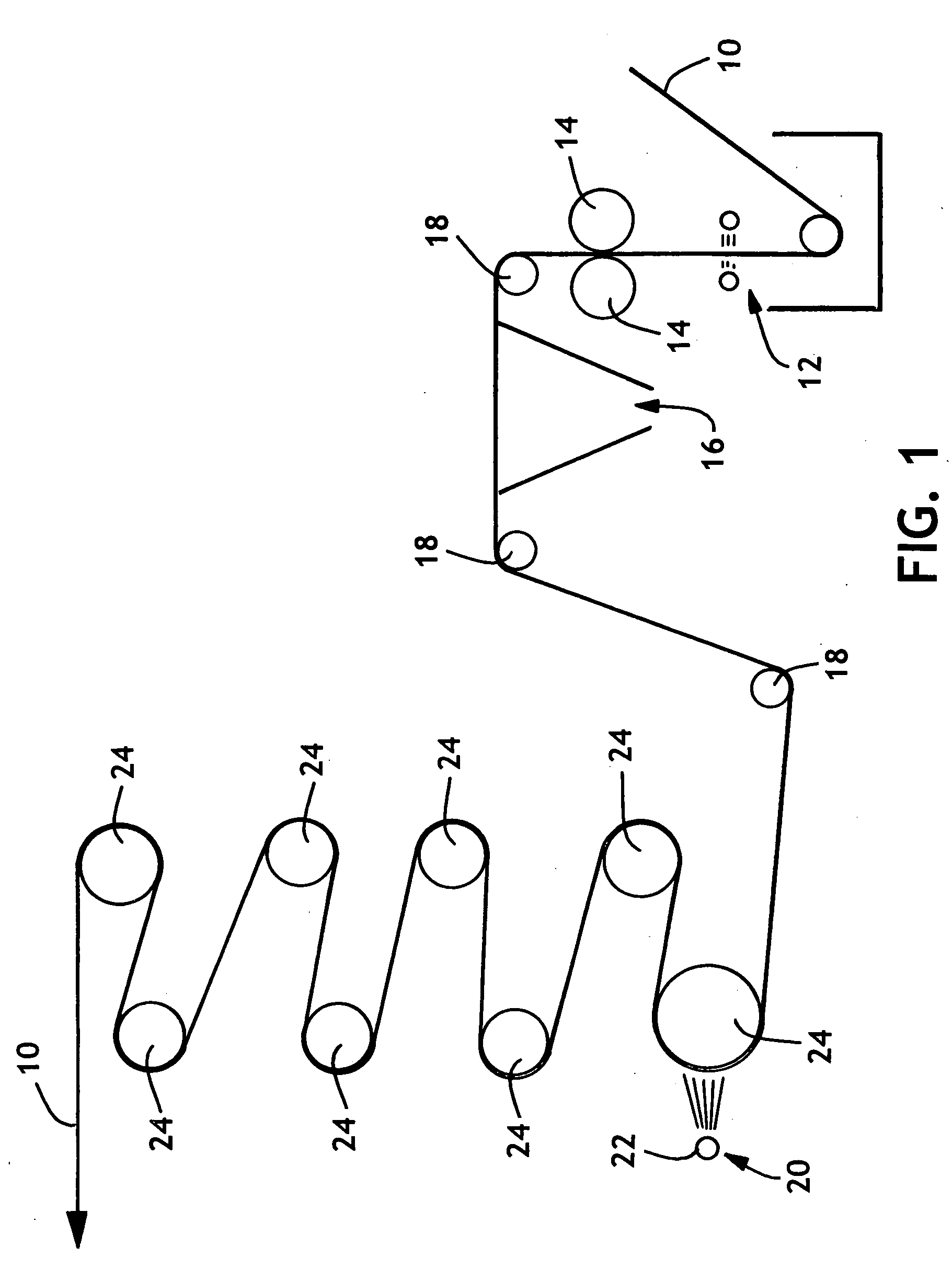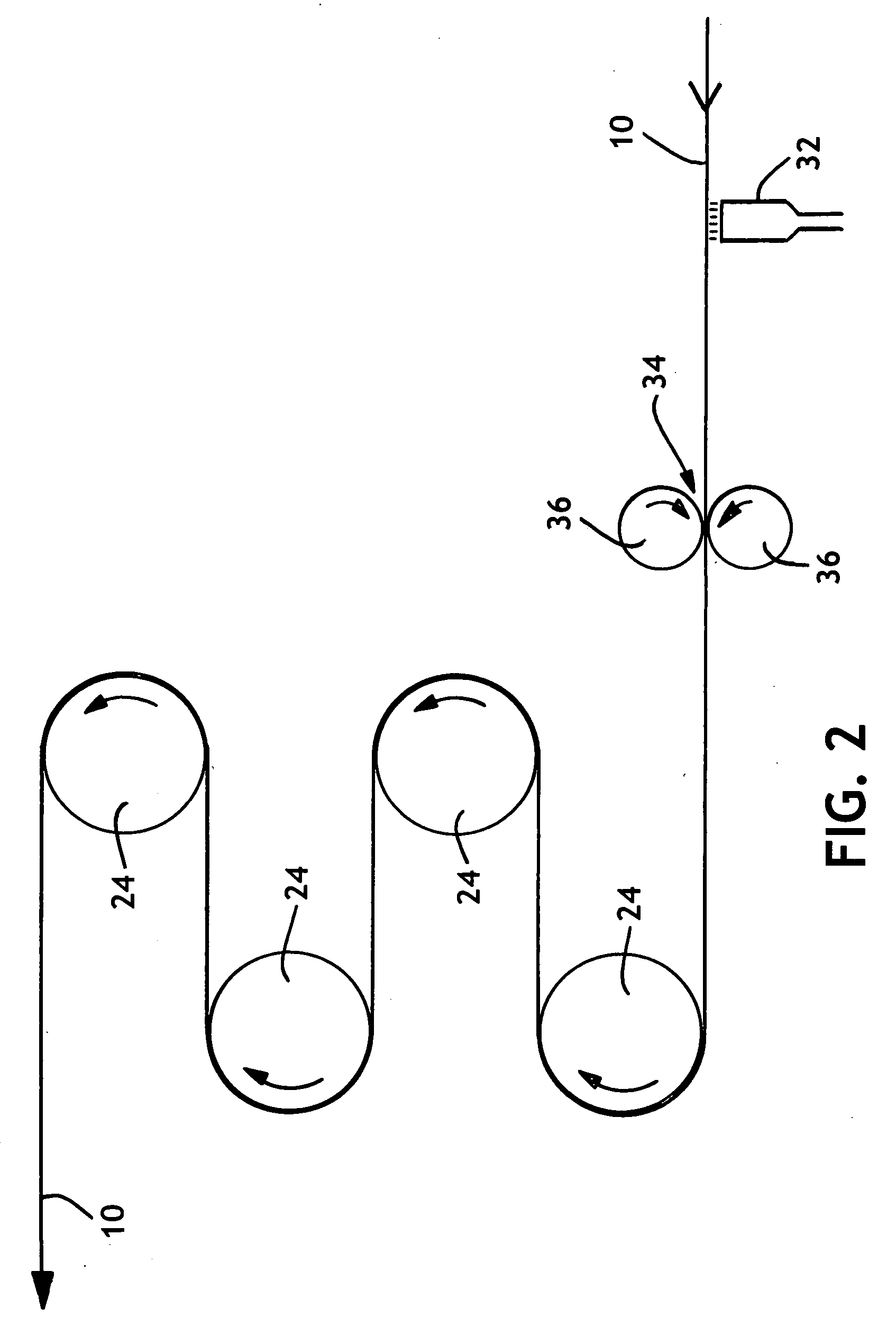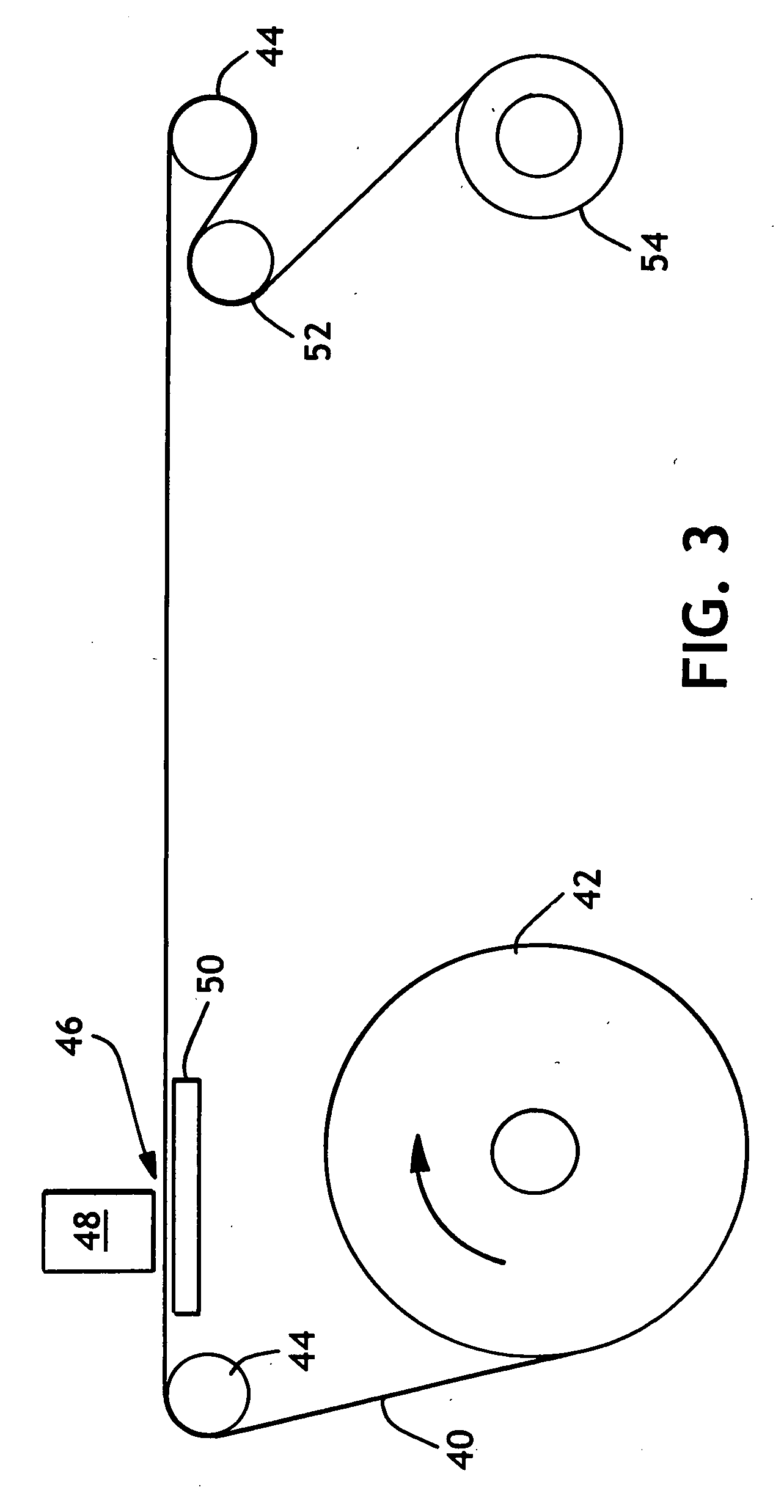Method of treating substrates with ionic fluoropolymers
a technology of ionic fluoropolymer and substrate, applied in the field of nonwoven fabrics, can solve the problem of reducing the level of water barrier provided by the finished product, and achieve the effect of reducing the effect of the water barrier of the fabri
- Summary
- Abstract
- Description
- Claims
- Application Information
AI Technical Summary
Benefits of technology
Problems solved by technology
Method used
Image
Examples
examples
[0041] The present invention is further described by the examples which follow. Such examples, however, are not to be construed as limiting in any way either the spirit or the scope of the present invention.
[0042] For those examples using SMS fabric, the general process for forming the fabric and treating it was as follows:
[0043] A spunbond / meltblown / spunbond (SMS) laminate consisting of about 35 weight percent of a first spunbond layer, about 30 weight percent of meltblown layer and about 35 weight percent of a second spunbond layer was formed as described in U.S. Pat. No. 4,041,203 to Brock et al. After forming, the SMS laminate was thermally bonded with a bonding roll resulting in about 15 percent bond area in a wire weave pattern. The fabrics produced had a basis weight of about 1.5 oz / yd2 (51 gsm) and about 1.2 osy (about 41 gsm) as specified in the respective example. After bonding, samples of the SMS laminates were treated offline using a batch process as described below. H...
example 1
[0049] Example 1 is an example of a method of treating a 1.5 osy nonwoven SMS fabric with a treatment solution that includes an ionic fluoropolymer, a monovalent salt and no antistatic agent. The treatment bath suspension of Example 1 consisted of a water bath in which was dissolved, or at least suspended, 0.69 weight percent of a cationic fluoropolymer suspension from Daikin America, Inc. and identified as UNIDYNE® TG-KC01, 0.30 weight percent of sodium nitrate (NaNO3), a monovalent salt obtained from Aldrich Chemical, and 0.25 weight percent of octanol. For Example 1, the alcohol repellency was measured at 90 percent IPA, the water barrier property was measured at a hydrostatic head of 62.3±2.9 mBar, which corresponds to approximately a 30 percent drop in hydrostatic head compared to the untreated material. The fluorine loading on the dried SMS laminate of Example 1 was measured at 0.17 weight percent by Galbraith Laboratories of Knoxville, Tenn.
example 2
[0050] Example 2 is another example of a method of treating a 1.5 osy nonwoven SMS nonwoven fabric With a treatment solution that includes an ionic fluoropolymer, a monovalent salt and no antistatic agent. The treatment bath suspension of Example 2 consisted of a water bath in which was dissolved, or at least suspended, 0.69 weight percent of a UNIDIYNE® TG-KC01 cationic fluoropolymer suspension, 0.15 weight percent of sodium nitrate, and 0.25 weight percent of octanol. For Example 2, the alcohol repellency was measured at 90 percent IPA, the water barrier property was measured at a hydrostatic head of 66.0±3.5 mBar, which corresponds to approximately a 25 percent drop in hydrostatic head compared to the untreated material. The fluorine loading on the dried SMS laminate of Example 2 was measured at 0.19 weight percent.
PUM
| Property | Measurement | Unit |
|---|---|---|
| Fraction | aaaaa | aaaaa |
| Fraction | aaaaa | aaaaa |
| Fraction | aaaaa | aaaaa |
Abstract
Description
Claims
Application Information
 Login to View More
Login to View More - R&D
- Intellectual Property
- Life Sciences
- Materials
- Tech Scout
- Unparalleled Data Quality
- Higher Quality Content
- 60% Fewer Hallucinations
Browse by: Latest US Patents, China's latest patents, Technical Efficacy Thesaurus, Application Domain, Technology Topic, Popular Technical Reports.
© 2025 PatSnap. All rights reserved.Legal|Privacy policy|Modern Slavery Act Transparency Statement|Sitemap|About US| Contact US: help@patsnap.com



